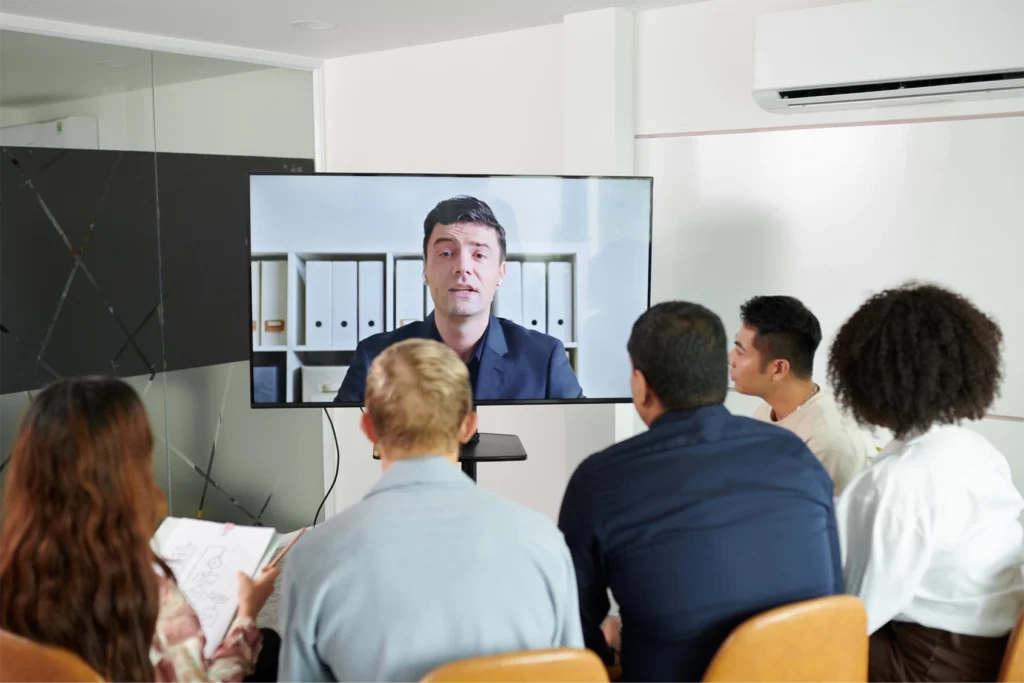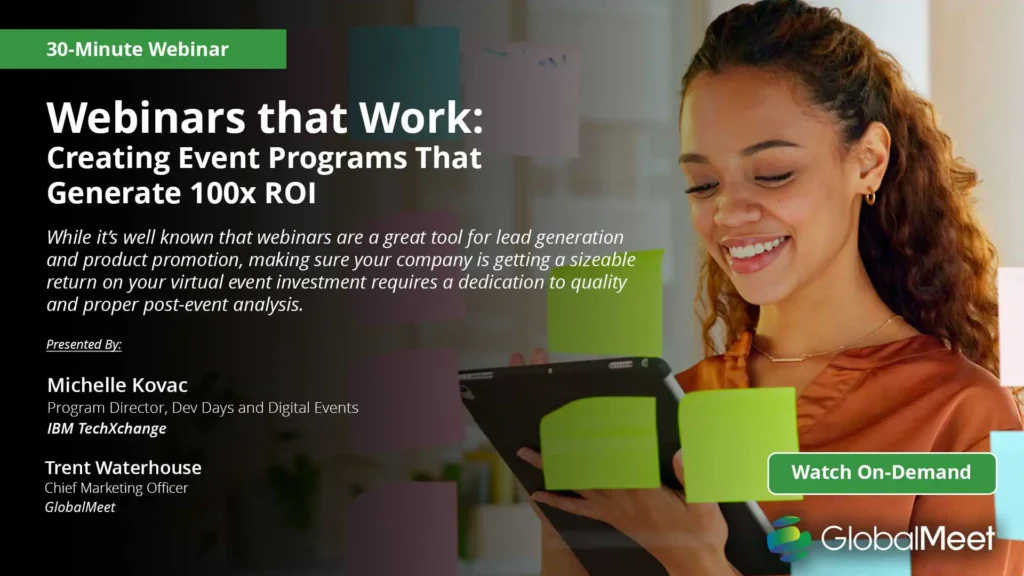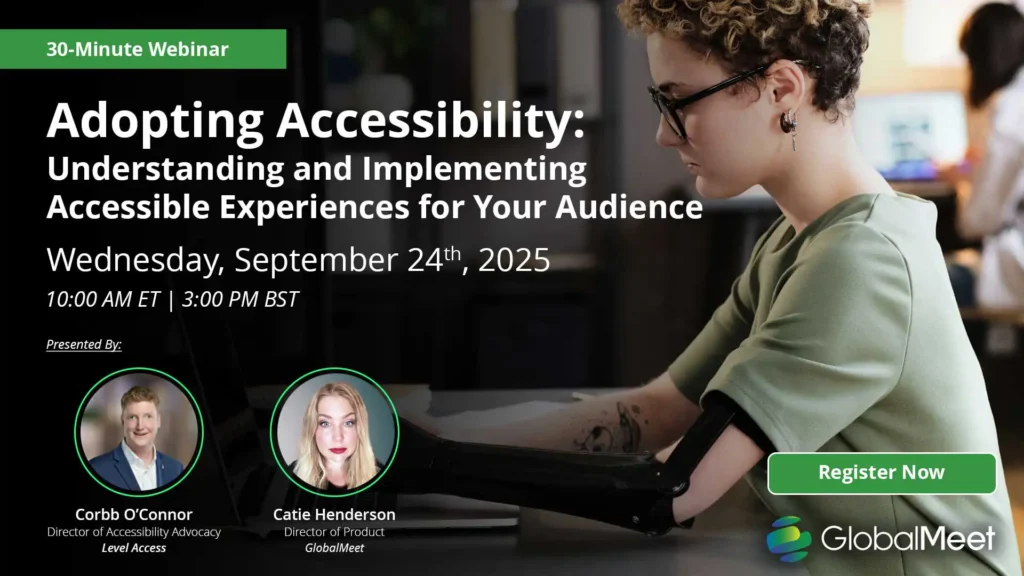
The Psychology of Virtual Events: What Drives Participation and Retention
- by GlobalMeet Blog Team
- ,
In recent years, virtual events have evolved from a stopgap solution into a permanent fixture of the events landscape. Whether it’s a multi-day virtual summit, a hybrid product launch, or a live-streamed training session, the success of these events hinges on more than just technology or content quality — it’s about psychology.
Understanding what drives people to sign up, show up, and stay engaged in virtual environments is crucial for any event organizer looking to improve virtual event retention.
Why Psychology Matters in Virtual Events
In traditional in-person events, social cues, environmental immersion, and physical presence help maintain focus and interest. Virtual events, however, must work harder to capture and keep attention, competing with distractions like email notifications, household responsibilities, or just the lure of another browser tab.
That’s where psychology comes in. By tapping into well-established cognitive and behavioral principles, virtual event organizers can design experiences that are not only engaging but also psychologically satisfying — encouraging people to participate more fully and stay for longer.
The Psychology Behind Participation: What Gets People to Show Up
Intrinsic and Extrinsic Motivation
Psychology defines motivation as having two key forms. Intrinsic, as coming from within the individual, and extrinsic, as coming from outside of the individual. It is vital to understand why your attendees are showing up for events, as this will show you how to make them stay, and return in future.
An intrinsically motivated attendee might sign up for virtual events to learn something new, meet their industry peers, or scope their competition. Extrinsically motivated attendees might be drawn by giveaways, exclusive content, or professional development credits that their company requires them to gain.
Knowing your attendees allows you to personalize your interactions with them, and ensure that your pre and post-event communications highlight the value that most resonates.
Social Proof and the Bandwagon Effect
Psychology Today defines The Bandwagon Effect as: “a psychological phenomenon whereby people do something primarily because other people are doing it, regardless of their own beliefs.” When combined with Social Proof, defined as “an informational influence (or descriptive norm) that can lead to herd behavior” it is clear to see why considering social influence in event planning could be critical.
By harnessing this knowledge virtual event planners can play to the psychology of potential attendees to increase engagement. Highlighting the current number of event registrants on a social post, or sharing keynote speaker spotlights may seem simple, but these actions build anticipation and participation by making potential attendees feel as though they are missing out, that they have to sign up because the rest of the industry is already attending.
Commitment and Consistency
In his 1993 Book Influence: Science and Practice, Robert Caldini wrote: “Once we have made a choice or taken a stand, we will encounter personal and interpersonal pressures to behave consistently with that commitment.” Though his research was conducted over thirty years ago, at a time when virtual events hadn’t even begun to develop, the principles of human behavior that be observed remain largely the same.
When viewed through the lens of virtual events, this analysis of behavior suggests that even a small initial engagement — like completing a pre-event survey or scheduling a single session — can build psychological commitment in the longer term. Using micro-commitments such as RSVP Polls, or downloadable personal agenda forms before an event can tap into this personal pressure, and increases the likelihood of eventual attendance.
What Keeps Attendees Engaged and Retained
Interactivity to Boost Engagement
The human brain craves stimulation, and harnessing that need can significantly boost event engagement. When attendees can engage actively with event content, rather than staring passively at a screen, they’re more likely to stay focused and remember what they learn. Polls, quizzes, Q&A sessions, and breakout discussions can all help keep the mind stimulated, and the participant engaged. Presenters have their own part to play in engagement, too. By addressing chat comments in real time and asking direct questions of the audience they can help virtual event attendees feel as though they are directly part of the experience.
Networking and Community Building
One of the biggest draws of in-person events is the chance to network. While this is harder to replicate virtually, effective networking opportunities can still significantly boost virtual event retention. By scheduling dedicated networking sessions, simple ‘meet your peers’ timeslots, and using AI tools for custom matchmaking, you can foster that sense of community and belonging that makes participants want to stay.
Gamification and Reward
Gamification taps into our competitive instincts and love of achievement. Leaderboards, point systems, scavenger hunts, and rewards for participation can add a fun layer to virtual events that can be the difference between a participant checking out, or staying to the end.
Implementing a points-based engagement tracker where attendees earn rewards for participating in sessions, engaging in chat, or downloading content — with tangible rewards at the end — can motivate your event participants to engage far more than a simple Q&A.
The Power of Exclusivity
Scarcity and exclusivity can create a psychological sense of urgency and value, even in virtual events where attendance could theoretically be unlimited. If something feels limited or special, regardless of whether it is, people are inherently more likely to prioritize it. By using language that implies exclusivity in your virtual event marketing, you can tap into that scarcity bias, and encourage potential attendees to act.
Managing Cognitive Load in Virtual Events
The American Psychological Association defines Cognitive Load as “the relative demand imposed by a particular task, in terms of mental resources required.” Virtual event attendees are particularly susceptible to cognitive overload as they are exposed to other loading factors such as screen fatigue, distractions, and dense information delivery.
But understanding cognitive load allows virtual event planners to build sessions mindfully, ensuring the best experience for participants.
Keep Sessions Concise and Focused: Long, unfocused sessions lead to overload, and disengagement. Aim for brevity and clarity in all content delivery, designing sessions around one or two key takeaways, and planning for interactive breaks at regular intervals.
Build in Breaks and Transitions: Breaks are essential to refresh attention and consolidate learning, so it is important to schedule short rest periods between sessions. Event planners could even offer optional mindfulness, wellness, or stretching sessions to reset attention spans and encourage continued engagement.
Segment Content for Better Absorption: Chunking — breaking information into manageable parts — is a common method to reduce cognitive strain and enhance memory retention. Use modular session design with clearly defined segments, group related content, and offer session replays or summaries to reinforce key points.
Best Practices for Leveraging Psychology in Virtual Events
Harnessing psychology to enhance your virtual events doesn’t have to be complicated. With just a few small changes to event design, participants are more likely to be engaged, and more likely to return.
- Design with motivation in mind: Understand what drives your audience and craft an experience that speaks to both their goals and incentives.
- Activate participation early: Use micro-engagements before and at the beginning of the event to spark involvement.
- Encourage social interaction: Incorporate networking and group activities to combat isolation and increase investment.
- Gamify the experience: Leverage competition, rewards, and progress tracking to increase involvement and satisfaction.
- Mind the mental load: Keep content digestible, pace the schedule thoughtfully, and provide re-engagement opportunities.
Conclusion
Virtual events are more than just static online meetings — they’re complex psychological environments that require intentional design. By understanding the core psychological principles behind human behavior, you can create events that not only attract attendees, but keep them actively involved from start to finish.
The future of virtual events lies in the fusion of technology and human psychology. Those who can master both will set a new standard for virtual event engagement and retention.


